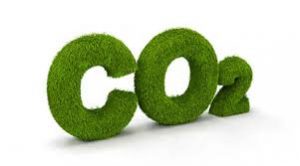
Williams announced its climate commitment, setting a near-term goal of 56% absolute reduction from 2005 levels in company-wide greenhouse gas emissions by 2030.
The move puts the company on a positive trajectory to be net zero carbon emissions by 2050. By setting a near-term goal for 2030, the company plans to leverage its natural gas-focused strategy and technology that is available today to focus on immediate opportunities to reduce emissions, scale renewables and build a clean energy economy – while looking forward and anticipating future innovations and technologies.
“We see firsthand the important role natural gas plays today in a viable and sustainable low-carbon future, and we know that natural gas is critical to addressing climate change. It creates a practical and affordable solution for immediately reducing emissions both here and around the world. It also is key to maintaining reliability and enabling scaled use of renewable energy,” said Alan Armstrong, president and chief executive officer at Williams.
He said the company hopes to challenge others to establish similar goals.

To reach its 2030 target, Williams is pursuing common sense methane emissions reduction opportunities through leak detection and repair, work practice improvements, and evaluating equipment upgrades on a site-specific basis.
This near-term phase also includes collaborating with peers and customers to uncover and implement innovative emissions reduction strategies through Williams-led initiatives, research organizations and trade groups. In addition, Williams will continue to support Colorado State University’s Methane Emissions Technology Evaluation Center and fund methane emissions reduction projects at Pipeline Research Council International.
Other near-term efforts will focus on exploring renewable energy opportunities, including renewable natural gas and solar energy. Currently, Williams delivers RNG by partnering with energy companies in Washington, Idaho, Ohio, and Texas to transport methane emissions captured from landfills or dairy farms where the methane is a byproduct of the waste decomposition process.
Methane produced from the waste is a renewable fuel because it is captured as biogas rather than being released directly into the atmosphere. Williams’ Northwest Pipeline is interconnected with four RNG facilities, of which two were brought online in the past seven months, and looking ahead, the company plans to aggressively pursue additional RNG partnership opportunities.
These efforts are in addition to the company’s previously announced $400 million solar initiative across nine states spanning Williams’ footprint. Williams is identifying locations where solar power installations are both economically viable and can be located on company-owned land that is adjacent to existing facilities. Initial sites identified are in Alabama, Colorado, Georgia, Louisiana, New Jersey, North Carolina, Ohio, Pennsylvania, and Virginia. These facilities are expected to be placed into service beginning late 2021.
Source: BusinessWire





